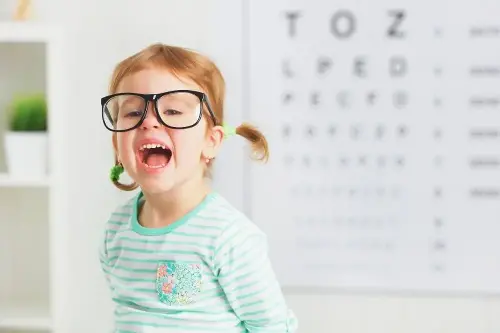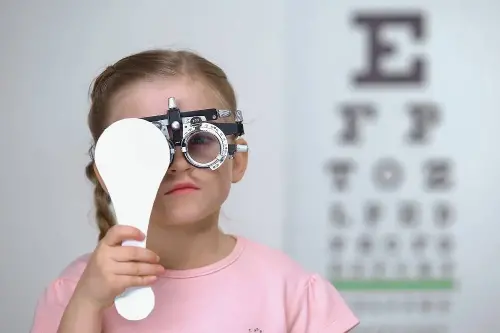
In today’s digital-first world, screens are nearly impossible to avoid. But, a major 2024 study published in JAMA Network Open is making parents stop and take a closer look.
This large-scale analysis, involving data from over 335,000 children, found a clear and concerning connection between screen time and a child’s risk of developing myopia or nearsightedness.
So how much screen time is actually too much? And what can you do to protect your child’s eyesight? Here are six key takeaways from the study that every parent needs to know.
1. More Screen Time = Higher Risk of Nearsightedness
The link is now stronger than ever. Every additional hour a child spends on a digital device increases their risk of developing myopia by 21 per cent.
“Whether it is smartphones, tablets or gaming devices, extended near focus takes a toll on developing eyes. Even as little as one hour per day raises the risk slightly.
“But if your child is clocking four or more hours daily, their risk of myopia almost doubles, up to 97 per cent,” the study said.
The takeaway? Even small increments in screen time can add up quickly.
2. Prolonged Near Work Alters Eye Development
What makes screen time so harmful for young eyes? It is all about prolonged near work, when the eyes are forced to focus up close for extended periods. This includes reading, writing and especially screen use at close distances.
“Over time, this kind of focus encourages excessive elongation of the eyeball, which directly leads to blurry distance vision, a hallmark of myopia. Once that change occurs, it can be difficult to reverse,” the study mentioned.
3. Screen Use Affects the Eyes Differently Than Books
The study acknowledged that not all near work is created equal.
While it did not directly compare screens with reading or drawing, it is important to note that screen exposure typically involves bright backlighting, close proximity and extended, uninterrupted use; all of which are more visually intense than traditional books.
Moreover, the study relied on parent-reported estimates of screen time rather than precise tracking and it did not account for lighting conditions or viewing distances, both of which affect eye strain.
Watching TV across the room is significantly less harmful than scrolling a phone inches from the face.

4. One Hour Per Day May Be a Safe Zone
So what is the safe limit? Based on the risk curve shown in the research, one hour or less per day of recreational screen time may be a reasonable guideline to follow.
This does not mean zero screen time, but it does mean being intentional.
“Use screens for school and essential tasks, but avoid endless scrolling or binge-watching without breaks,” the study suggested.
5. Myopia Is Rising, but Prevention Is Possible
The global rise in myopia is not just about screens, but they are a big part of the problem.
Fortunately, there are simple, science-backed ways to protect your child’s vision:
- Encourage outdoor play: Aim for at least two hours a day. Natural light and distance focusing reduce myopia risk.
- Use the 20-20-20 rule: Every 20 minutes, look at something 20 feet away for at least 20 seconds.
- Schedule regular eye check-ups: Myopia can develop gradually and go unnoticed.
- Limit recreational screen use: Avoid screens as digital ‘babysitters’ and create screen-free routines.
Being mindful today can prevent long-term vision challenges tomorrow.

6. Do Not Panic, Be Proactive
The good news is, you do not need to live in a screen-free household to protect your child’s vision. Instead, focus on building healthy habits early.
“By creating balance, setting screen limits and encouraging outdoor activity, you can significantly reduce your child’s risk of myopia, without eliminating digital devices entirely,” the study added.
Eyes on the Future, Not Just the Screen
As screens become more embedded in daily life, understanding their impact on children’s eye health is crucial.
Moderation matters and the sooner we act, the better the outcome for our children’s vision.
